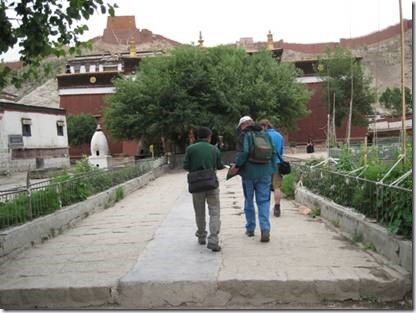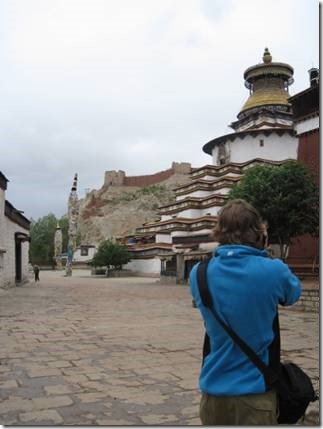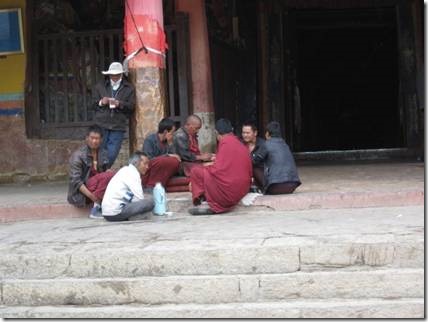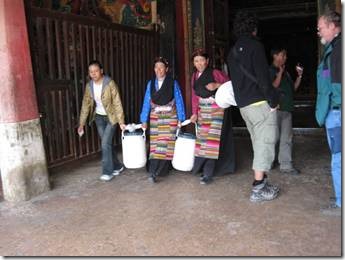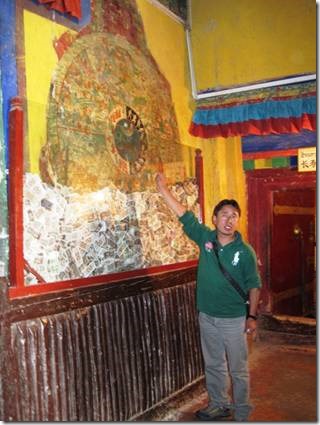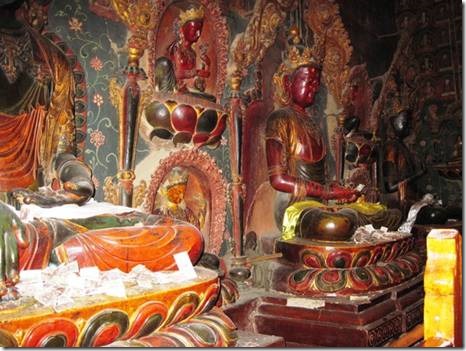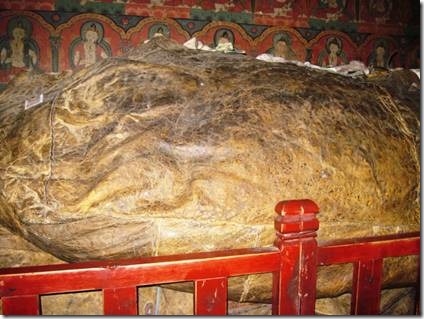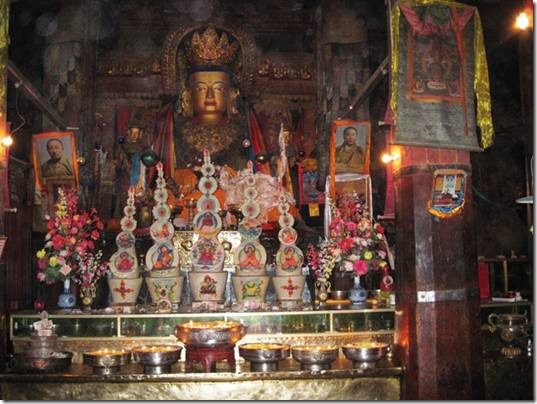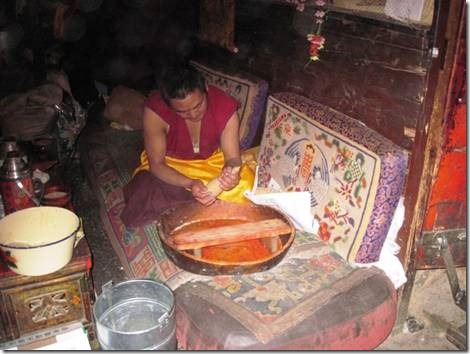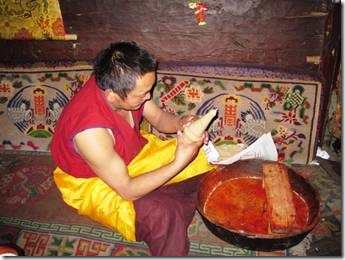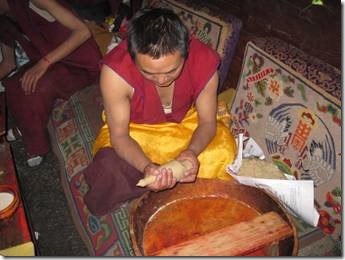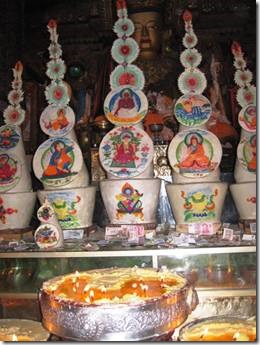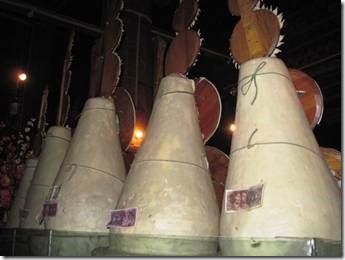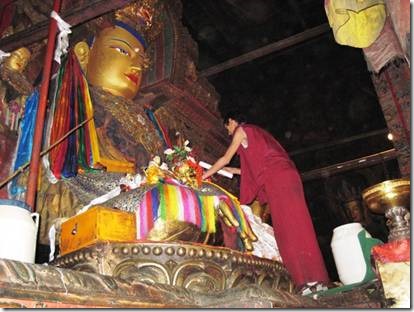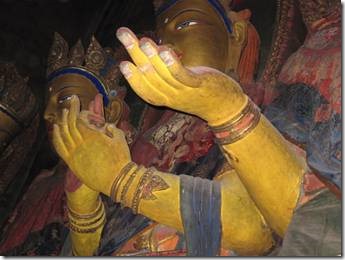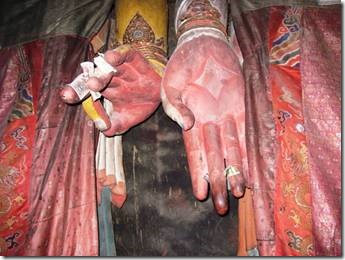Puteri Harbour Marina
Johor, Malaysia
Hi All
Usually when we are traveling I take good notes and know ahead of time what we will see: but not this trip. It was Randal’s idea to go to Tibet and I just sort of went along with it so I really didn’t read up ahead of time and we didn’t take a travel guide. Actually the only thing I read about was altitude sickness and robbers in Nepal, both a bit off putting. And visitors must be part of a tour to visit Tibet, so we would be on a “group” tour with a fairly set itinerary. As we traveled through Tibet I would just download my photos with a broad heading like, Lhasa to Shigatse, because I haven’t figured out Windows 7 picture program and it didn’t allow me to select photos for separate folders. I usually do that in XP so I can label folders with the exact name of the place where I took the photos The point of all that is this: I was pretty sure I remembered visiting a monastery after the glacier and before we arrived in Shigatse and that’s what my photos showed. But our tour print out said that we didn’t. Our entry ticket wasn’t stamped with a date I could read. Randal said that he didn’t remember. Luckily Ronnie and David were there too so I checked their website and read what they had to say.
“We finished the sight-seeing of the day by going to the Pelkor monastery. David coughed up some money in order to be able to film and take photos inside the monastery. He got so caught up in his filming that he didn’t notice when a monk locked him in, in one of the rooms – the monk didn’t notice him sitting there and filming the inert statues for 3.5 minutes ![]() ” http://www.project-7.se/?s=tibet
” http://www.project-7.se/?s=tibet
It was really fun reading what Ronnie and David had written about the Tibet tour and their gallery of photos is wonderful. If you select PHOTOS on their website and then click on Galleries, you can find their Tibet photos. Randal and I are even in a few of them!
Pelkhor Chode Monastery
“Founded in the 15th century, the Pelkhor Chode Monastery is the most famous site in Gyantse, 162 miles southwest of Lhasa. The marvelous octagonal Kumbum (Palace of a Thousand Images) stupa rises up within the walls, with nine tiers, 75 chapels, and 108 gates. Containing a lengthy pilgrim circuit past the magnificent murals, the stupa was completed in 1427. Gyantse’s hilltop fort, the Dzong, dates back to 1268, and has superb views. “ p.306 National Geographic Traveler China It sounds pretty interesting so I wish I’d paid more attention.
Ronnie taking photos of the nine tiered stupa with some of the fort walls showing on the left.
If these weren’t monks I’d say they were all participating in some sort of gambling activity.
There were very few tourists here unlike the monastery we would visit the next morning in Shigatse.
I think the containers hold recycled candle butter.
The women are wearing the lovely aprons indicating they are married.
Lobsang explaining about the mural.
Part of the problem with taking photos is that you concentrate on the photos and not listening to the information about the object you’re photographing. I did look at the mural and saw that it was covered with smoke soot and was fading. Small denominations of Chinese money are donations from visitors. I think Lobsang said it also had some astrological symbolism or the history of the monastery, or….
Carvings on the wall looked like polished wood, but Lobsang said they were mud!
This is a giant covering made of yak skin. It covers a piece of artwork used for special occasions. In the Tibet Museum I saw a boat made of yak skin that looked almost like this though it was stretched tight to make a boat. It felt like leather which made sense.
The Chinese government allows photos of high lamas or abbots though not photos of the current Dalai Lama.
Lots of yak butter in this photo. There are yak butter candles burning in the metal bowls. The tall white decorative pieces in front of the statue are also mounted on stupa shaped sculptures made of barley flour and butter!
I had paid to take photos in this room and while there took many photos of this monk molding the small stupa shaped objects. Randal and Lobsang had gone on ahead so one of the other guides explained to me about the flour and butter and asked the monk if I could take photos. I asked if I could touch it and he said no but broke off a small piece of unused dough so I could feel what it was like. Most monks and nuns do some type of creative work whether it be painting or sculpting or tending flowers.
I was fascinated watching this monk mold the small stupa shaped object.
Front Back
I don’t know what the monk is doing; but he was up and down pretty quick and I don’t know who the statue is supposed to be. I think probably some form of the Buddha.
There were large Buddha statues around the room and all held their hands to indicate different things. Visitors have put donations into one of the hands.
I finally left this room and went off to find Randal, Lobsang and the guys. After getting a bit lost I found them and they asked me where was David? I had noticed a monk locking the door of the room behind me but I hadn’t noticed that David was still inside taking his video of the Buddha. He was locked in. He managed to get the attention of the monks and they let him out and he finally found us.
Next email, walking around the outside walls of the monastery.
Ru DoraMac

